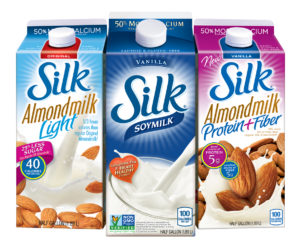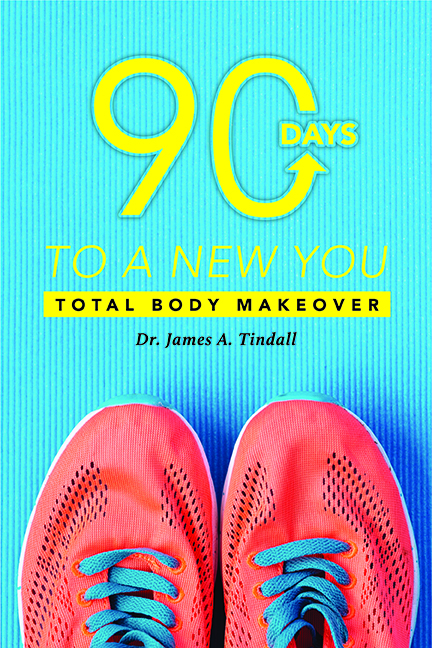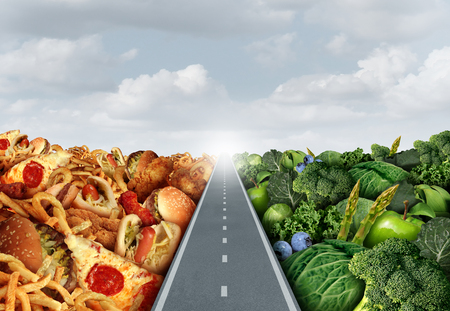The ketogenic diet severely restricts carbohydrate intake to about 10-20 grams per day. We also call it the athletic diet because we use it for athletes who come to training camp severely overweight and thus, we need to drop the excess weight quickly. Our first trial with this diet was done on one of our coaching staff who was about 20% bodyfat, but not overweight. He lost 17 pounds in 3 weeks and dropped to about 5-6% body fat. Calories you would normally get from carbohydrates are obtained from fats and proteins. A normal intake of food would be about 50% carbs, 25% fat, 25% proteins. The athletic or ketogenic diet is about 50/50 fat/protein.
The severe restriction of carbohydrates puts the body in a state of ketosis. In this state, the body increases conversion of fat by the liver into compounds known as ketone bodies. Normally, the brain uses primarily glucose as energy, but when carbohydrates (and thus glucose) are limited, ketone bodies can instead be used as an alternative energy source, which is the case in this diet.
Advertisement: CytoCharge (click on photo for more info)

Yes, the brain can use these ketone bodies and the fat needed to produce ketone bodies generally comes from stored body fat or excess sources from your diet.
The Ketogenic/Athletic Diet is not for Everyone
This diet will help you lose weight, but you must carefully consider that it is a diet therefore, it is meant to be very short term. Also, you must consider what your or your clients goals are and what he/she/you hope to achieve.
Findings published in the Annals of Internal Medicine illustrate that low-carb diets (such as the ketogenic diet) are better for losing weight than low-fat diets. The reason for this is because a ketogenic/athletic diet helps suppress appetite due to high fat and protein intake; both provide greater satiety than carbohydrates.
One thing you should note is that the adjustment period of the ketogenic/athletic diet in the beginning can be difficult. Generally, hunger pangs and cravings are substantially heightened. In other words, it takes a little getting used to. This is because there is a metabolic change that occurs when following this diet, as opposed to a more balanced diet.
When carbs are reduced and fat and protein consumption increase, hunger is decreased because of satiety, i.e., you feel full because of fat and protein intake, much like eating a steak. This leads to fewer calories consumed overall. And, fewer calories consumed generally results in weight loss. I have put clients on this diet many times; not one has failed to drop a significant amount of weight. What is nice about this short-term diet is that not only do you lose weight, a big proportion of that weight loss is fat loss.
Advertisement: Silk (click on photo for more info)

Some argue that this weight loss could just be because of high protein intake, but I have not found that, as a formally trained scientist, to be the case. Others argue that when starting such a diet the first time, that weight loss comes from loss of water and, once again, I have not found this to be true if the diet is done properly.
Fats, Proteins, and Cholesterol Profile
Many believe that by consuming more fat and protein, without carbs, that your cholesterol profile will increase with this short-term diet. You’re in luck because this diet has been shown to improve blood lipid profiles significantly in both healthy and obese men. Also, it is quite likely that older clients may be more interested in improved health rather than losing a few inches around the waist.
Let’s look at cholesterol a little. One of the key indicators of heart disease is triglyceride levels, which are, unbelievably, not affected by fat intake. It is carbohydrate consumption that drives triglyceride levels, not fat.
A healthy cholesterol profile has high HDL (high-density lipoprotein) level and low LDL (low-density lipoprotein) and triglycerides. Therefore, one of the best ways to increase HDL levels and reduce triglyceride levels is to eat healthy fats, including saturated fats.
The consumption of dietary cholesterol does not have a detrimental effect on blood cholesterol values and you should note that cholesterol is a carrier compound – not a fat molecule. Studies have noted differences in cholesterol parameters depending on whether the subject maintained a low-fat or high-fat diet. The utilization of high-fat diets resulted in improvements to HDL levels, as well as a reduction in triglyceride levels, both of which are good indicators of low cardiac risk. Now, I’m not telling you to go out and eat fat, fried foods like fried chicken. Eat responsibly.
Does the Athletic/Ketogenic Diet Always Work?
Bear in mind that this is a very short-term, significantly carb restrictive diet. Consequently, it will not fit everyone goals. For example, suppose you or your client wish to build lean muscle mass. If you do, this diet is not appropriate for that because building mass and sticking to a high-fat diet counteracts each other. Think of it like driving a car, it’s like pressing the brake and accelerator at the same time. This is because carbohydrates are needed to build muscle mass because it is glycogen (stored in muscle and the liver) that strenuous training, as well as the promotion of insulin response, which allow amino acids and glucose to enter muscle cells and initiate the process of muscle protein synthesis. If you need to lose weight quickly, get on the diet and once the weight is lost, go back to a more normal diet and then, get back into your muscle-building program.
There are problems with this short-term diet. The following is a partial list of the issues: Additionally, due to the nature of the ketogenic diet, these issues may arise:
Decreased Stamina: When first beginning the diet, there is usually a noticeable adjustment period of about 10 days depending on the person in which you’ll notice a reduction in your physical capacity. This is normal. Over time, the body becomes more efficient at producing and utilizing ketone bodies, which, along with other adaptations of metabolism and dietary considerations, will result in a reasonable return to normal levels of physical performance.
Bad Breath (Keto breath): A high concentration of ketone bodies in your system will generally result in breath with an unusual smell. Your breath may smell anywhere from fruity to acetone/chemical like. The latter is more normal because acetone is one of the ketone bodies produced from the conversion of fat, however, it is not volatile or dangerous when the body make it.
Food Diversity: Initially is can be difficult to determine which food(s) may satisfy you or your client. Thus, you should explore more n the beginning, it can be difficult to figure out which foods can satisfy your client. Try some low-carb or what we call negative carb veggies such as celery and fats such as pepperoni, bacon, or sausage. You can try any of these, especially bacon dipped in chocolate; dark is best since it’s lower sugar and doing so makes the diet more palatable.
Mood Swings: Are you one of those types who get irritable if you don’t eat? Well, this diet can have a similar effect on some people. When you are restricted severely from carbs and sugars the endorphins they produce are removed and generally replaced by feeling on edge or down right irritability. Hence, bacon dipped in chocolate.
Advertisement: Amazon (click on photo for more info)

If you or your client have diabetes, you must consult a physician before embarking on this diet. For those with diabetes, this diet is not a cure and you need to determine if you should even attempt it thus, seek medical advice first.
Can You Still Train if You’re on a Ketogenic/Athletic Diet?
The answer to this question is yes. This is because fats can be used as a fuel source for longer duration, low-intensity activity, making the diet suitable for athletes such as ultra-endurance athletes. Thus, is you’re a runner, especially a marathon runner, train away (think marathon runners). Even if you’re not, you may still train, but will need to decrease the intensity level because stored fat is converted to usable energy. But, the body doesn’t convert this fat readily to glucose so it needs to compensate with the production of ketone bodies. Consequently, you’ll lose the edge during high-intensity workouts while on the diet.
The problem is, when training very hard in a fasted state, some muscle may also be devoured during this training period, as amino acids from muscles can also be converted to glucose. There is some evidence that supplementing with branched-chain amino acids (BCAAs) before and/or during fasted exercise may decrease the degree to which catabolism occurs, primarily as fat oxidation is increased (common on a keto diet).
Because of all of this, you need to look at why you’re doing this diet and what your goals are. Keep in mind you or your client’s performance needs. For the average fitness buff, the training is generally not strenuous enough to be affected in the keto state, what some term as the fasted state. However, if you have a speed-strength or high-intensity level athlete such as a ball player, sprinter, power lifter, martial artist, etc., and who requires fuel for maximal power output, training in keto state will generally reduce (somewhat) performance and results. So, if you’re looking to improve your one-rep max (1RM), don’t look for help from this diet while on it. For a short boost, try a 4-ounce glass of purple grape juice about 20-30 minutes before a major workout, but this can only be done about once per four days to remain true to the diet.
So again, do the diet first, drop the weight you want while performing endurance type activities such as runs, biking, etc. then, go back to your normal regimen to build those muscles. You’ll likely be pleasantly surprised at the definition you have once you drop the stored fat!
Watch Your Electrolytes
Electrolyte deficiency is a common problem on a normal diet since most people simply do not monitor their electrolyte levels. On this diet and other low-carb diets, electrolyte deficiency is more of a concern. This is because the removal of certain foods from the diet generally result in an insufficient intake of electrolyte minerals. An example is potassium found in bananas. Consequently, you need to look at substitutions for electrolytes into this diet. This is important because when starting the ketogenic diet, the body will drive fluid out of your muscles to obtained more glucose stored in the muscles. One of the better ways to circumvent this is to increase electrolyte intake for two weeks prior to beginning a ketogenic diet with foods such as nuts (magnesium), avocados and bananas (potassium), salt (sodium), etc.
Ketogenic diets have been around for a while and there are three main types: standard (SKD), cyclic (CKD), and targeted (TKD). It’s worth investigating them to determine which is best for you or your client. The SKD is the basic reduction of carbs while moving into consumption of fats and proteins and is the basic one most ascribe to.
The CKD is an advanced diet used primarily by bodybuilders to continue losing body fat, while at the same time keeping metabolic health and avoiding muscle loss. This diet generally involves following true ketogenic principles for a few days at a time (3-5 days), then alternating with higher carb days (1-2 days). This is the diet I put my pro athletes on. It is often conducted in phases. As an example, during the first phase, high-carb days may only include about 50 grams of carbs daily, but during subsequent carb-loading phases, this number can jump to 500 grams per day. Note that a typical high-carb phase consists of 1-2 days of high-carbs, i.e., re-feeding the body, and should only be employed if the workout sufficiently exhausts muscle glycogen during the previous five days of low-carb eating.
The TKD involves “targeted” nutrition, which is a period during the pre-workout phase. This type of keto diet works by consuming 25-50 grams of rapidly digestible, high glycemic index food 30-60 minutes before a workout. Glucose-containing foods such as bread and pasta are great because they facilitate glycogen storage in muscles. Many athletes will do fine on a SKD or CKD. But, bodybuilders who want to train as hard as possible may find the TKD worthwhile. Just remember that not every athlete needs or benefits from these diets.
As a rule, the ketogenic diet is viable and not difficult to stick with for a little while. Most people get great results from it, but, as I said before, it isn’t a good fit for everyone. Should you decide to try a ketogenic diet monitor energy and electrolyte levels then, make small adjustments as needed. If you need help, feel free to contact the author.







